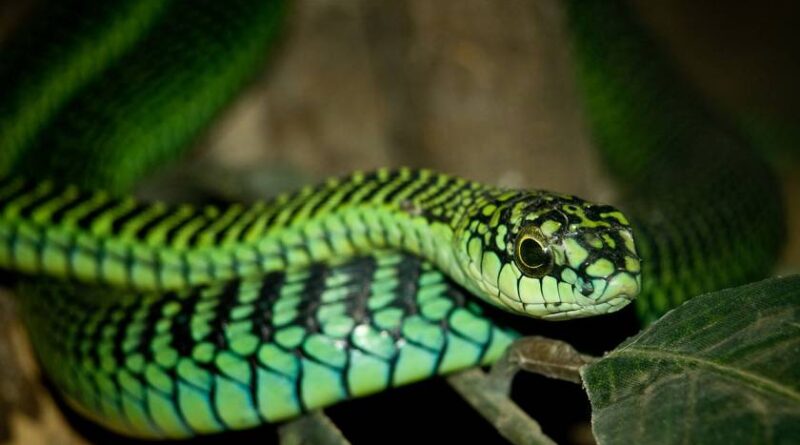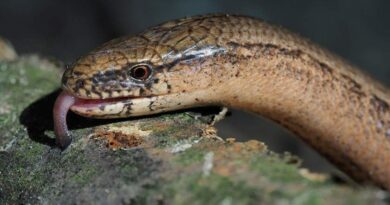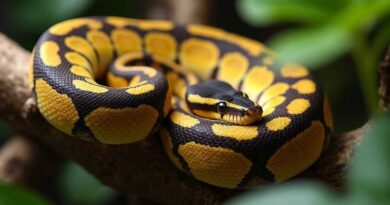BOOMSLANG
Dispholidus typus, a huge African tree snake with three enlarged grooved fangs in the top jaw below the back-eye, is known as Booomslang. It is the most dangerous of the fanged snakes, and its bite has the potential to kill humans. The Afrikaans word boomslang means “tree snake.”
The boomslang is about 4 feet (14 metres) long on average. It has a thin body and tail covered in narrow, oblique, strongly keeled scales. It has a short head with very large eyes and a slender body and tail covered in narrow, oblique, highly keeled scales. It can be found in well-forested areas of Africa south of the Sahara. The female lays 5-10 elongated eggs that are around 1 inch (25 mm) long. The young are roughly 15 inches (38 cm) long when they are newly hatched. The female lays 5-10 elongated eggs that are around 1 inch (25 mm) long. The young are roughly 15 inches (38 cm) long when they are newly hatched. The boomslang hunts during the day, and if food is sufficient, it may linger in a tree or group of trees for several days. It eats mostly chameleons, although during the nesting season, it eats a lot of fledgling birds and eggs; adult birds are rarely caught. Other snakes are rarely attacked, although lizards, frogs, and rodents are eaten. When disturbed, the boomslang tries to flee as quickly as possible, but when caught, it inflates its throat with air, unleashing a furious lunge at its assailant with gaping jaws. Its venom is exceedingly poisonous, damaging blood fibrinogen and causing severe internal bleeding. The specialised anti-venom is in short supply because to the small amount of venom produced by a boomslang. CLASS: Reptilia, FAMILY: Colubridae, ORDER: Squamata.



